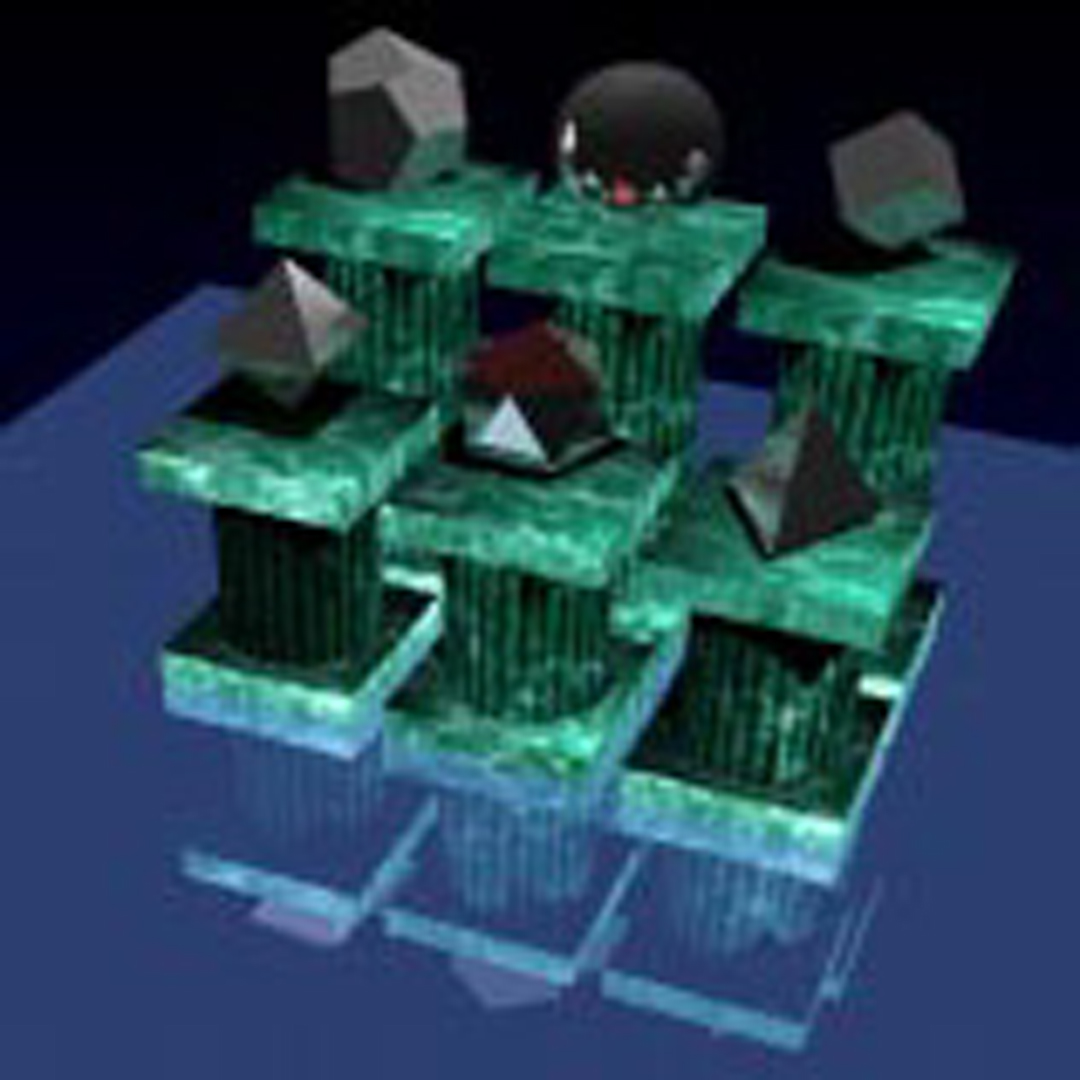“Interactive reflections on curved objects” by Ofek and Rappoport
Conference:
Type(s):
Title:
- Interactive reflections on curved objects
Presenter(s)/Author(s):
Abstract:
Global view-dependent illumination phenomena, in particular reflections, greatly enhance the realism of computer-generated imagery. Current interactive rendering methods do not provide satisfactory support for reflections on curved objects. In this paper we present a novel method for interactive computation of reflections on curved objects. We transform potentially reflected scene objects according to reflectors, to generate virtual objects. These are rendered by the graphics system as ordinary objects, creating a reflection image that is blended with the primary image. Virtual objects are created by tessellating scene objects and computing a virtual vertex for each resulting scene vertex. Virtual vertices are computed using a novel space subdivision, the reflection subdivision. For general polygonal mesh reflectors, we present an associated approximate acceleration scheme, the explosion map. For specific types of objects (e.g., linear extrusions of planar curves) the reflection subdivision can be reduced to a 2-D one that is utilized more accurately and efficiently.
References:
1. Blinn, J., Newell, M., Texture and reflection in computer generated images. Comm. ACM, 19:542-546, 1976.
2. Diefenbach, EJ., Badler, N.I., Multi-pass pipeline rendering: realism for dynamic environments. Proceedings, 1997 Symposium on Interactive 3D Graphics, ACM Press, 1997.
3. Foley, J.D., Van Dam A., Feiner, S.K., Hughes, J.F., Computer Graphics: Principles and Practice, 2nd ed., Addison-Wesley, 1990.
4. Glassner, A. (ed), An Introduction to Ray Tracing. Academic Press, 1989.
5. Greene, N., Environment mapping and other applications of world projections. IEEE CG&A, 6(11), Nov. 1986.
6. Haeberli, E, Segal, M., Texture mapping as a fundamental drawing primitive. Proceedings, Fourth Eurographics Workshop on Rendering, Cohen, Puech, Sillion (eds), 1993, pp. 259-266.
7. Hall, T., Tutorial on planar mirrors in OpenGL, posted to comp.graphics.api.opengl, Aug. 1996.
8. Hanrahan, E, Mitchell, D., Illumination from curved reflectors. Proceedings, Siggraph ’92, ACM Press, pp. 283-291.
9. Heckbert, ES., Hanrahan, E, Beam tracing polygonal objects. Computer Graphics, 18:119-127, 1984 (Siggraph ’84).
10. Jansen, F.W., Realism in real-time? Proceedings, Fourth Eurographics Workshop on Rendering, Cohen, Puech, Sillion (eds), 1993.
11. McReynolds, T., Blythe, D., Programming with OpenGL: Advanced Rendering, course #23, Siggraph ’96.
12. Ofek, E., Modeling and Rendering 3-D Objects. Ph.D. thesis, Institute of Computer Science, The Hebrew University, 1998.
13. Rushmeier, H.E., Extending the radiosity method to transmitting and specularly reflecting surfaces. Masters’s thesis, Cornell University, 1986.
14. Segal, M., Korobkin, C., van Widenfelt, R., Foran, J., Haeberli, E, Fast shadows and lighting effects using texture mapping. Computer Graphics, 26:249-252, 1992 (Siggraph ’92).
15. Sillion, F., Puech, C., A general two-pass method integrating specular and diffuse reflection. Computer Graphics, 23(3):335-344 (Siggraph ’89).
16. Spanguolo, M., Polyhedral surface decomposition based on curvature analysis. In: Modern Geometric Computing for Visualization, T.L. Kunii and Y. Shinagawa (Eds.), Springer-Verlag, 1992.
17. Voorhies, D., Foran, J., Reflection vector shading hardware. Proceedings, Siggraph ’94, ACM Press, pp. 163-166.
18. Wallace, J.R., Cohen, M.F., Greenberg, D.P, A two-pass solution to the rendering equation: a synthesis of ray tracing and radiosity methods. Computer Graphics, 21:311-320, 1987 (Siggraph ’87).
19. Whitted, T., An improved illumination model for shaded display. Comm. of the ACM, 23(6):343-349, 1980.




